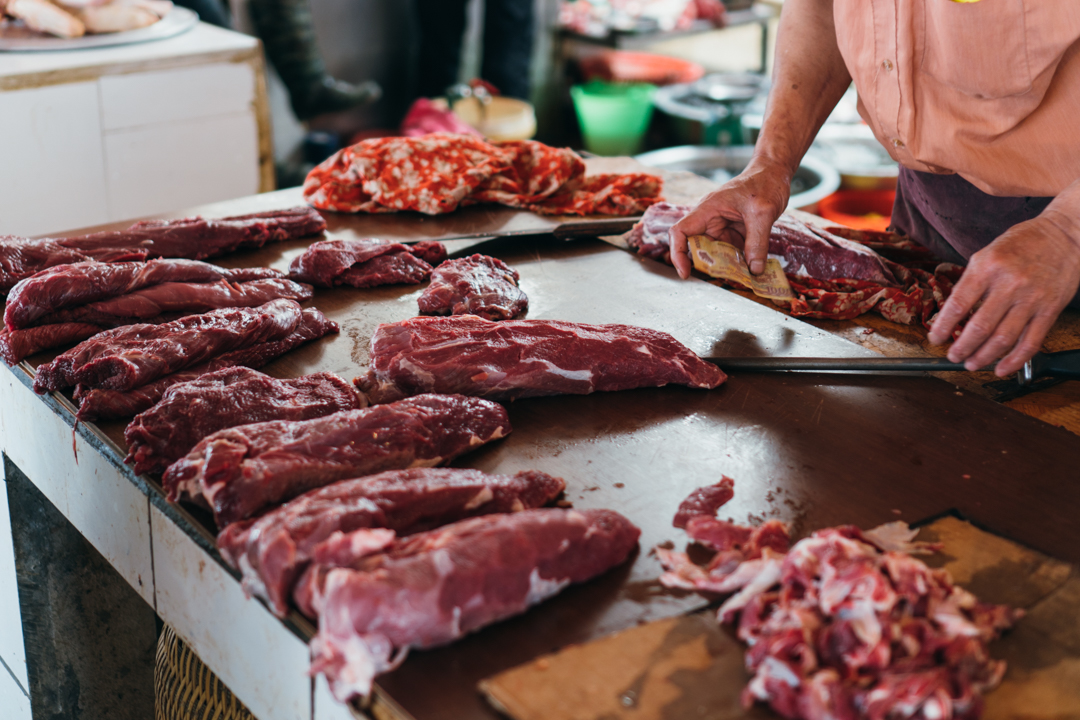When I told my friends I was only bringing a carry-on for my travels abroad, they all looked at me crazy. Well, 11 months later, I'm happy to report it was quite alright!
After reading tons of travel advice, one thing was clear: less is more. We tend to overpack and bring things we never wear or use. So to save time and money and to practice self-discipline, I made a rule to only travel with a carry-on.
Packing for Australia wasn't difficult. When I initially booked my flight, I wasn't sure what my travel pack situation would be, so I bought checked luggage allowance. I fit everything in my carry-on, but it weighed more than Jetstar's 7kg carry-on allowance, so I checked it. The real packing challenge came when I started my travels through Asia.
Many of the Australasian discount airlines only allow 1 to 2 carry-ons with a combined weight of 7kg. That's only 15.4 lb! Additionally, they weigh your bag when you check in at the counter, and you have no choice but to check in there because they check your travel documents before issuing your boarding pass.
So a few "things" I had to work with:
- My MacBook Pro 15" weighs 4.5 lb (2.02 kg)
- My Sony a6300 + 35mm lens weighs 1.2 lb (0.56 kg)
Those two items were already more than 1/3 of my allowable weight, not including all the chargers that went along with those devices...
So what did I bring and how did I manage?
The Clothes and Toiletries
1 jean jacket; 1 light jacket; 1 hat; 1 emergency duffel bag; 3 bras; 1 sports bra; 7 pairs of underwear; 7 tops; 1 small hand towel; 1 scarf; 4 bottoms: black jeans, jean shorts, skirt, running shorts; 1 belt; 1 epilator; 1 liquids bag: shampoo, conditioner, deodorant, contact solution; 1 toiletry bag: make up, earrings, comb, toothbrush, toothpaste, floss
1 pair of flip flops; 1 pair of athletic shoes
All the Other Essentials
1 laptop; 1 laptop case; 1 tote bag; 1 mini Moleskin; 3 pens; 1 sleeping mask; 1 power converter; 1 camera; 1 camera felt wrap; 1 camera charger; 1 iPhone charger; 1 laptop charger; 1 luggage scale; 1 external hard drive; 1 travel document pouch; 1 wallet; 1 pair of sunglasses; 1 watch; 2 bracelets; 1 sunscreen brush; 1 pouch: lotion, hand sanitizer, tissues, chapstick
And what it looked like all packed up!
Lessons Learned
Truth be told, damn, it was challenging meeting the 7 kg requirement! I packed and unpacked so many times to get it right. Throughout the process, I learned a few clever tips that helped me get to (and work around) the requirement:
- Get a light carry on.
Many carry ons or backpacks can weigh a decent amount, sometimes taking up to half of your weight allowance when empty! I opted to go as light as possible (my Samsonite 72 hours is 3.3 lb or 1.5 kg), so the rest of the weight could be dedicated to my stuff.
- The 2-6-2 Rule
2 pairs of shoes, 6 tops, and 2 bottoms. I ended up going 2-7-4, but it was a really good way to think of packing clothes because I had to pack tops that worked with all my bottoms, so they could be mix and matched on different days.
- Use pockets and wear your heavy clothing.
Since the airlines don't weigh what's on your person, I stuffed all my pockets with my heavy electronics like chargers and my external hard drive and wore as much clothing as possible like my jeans, my heaviest button-up shirt, my hat, and my two coats. That way, I stretched the 7 kg for everything else. And once I got through security, I would stuff everything into the carry on so I didn't have to carry it.
- Get a luggage scale.
The little luggage scale saved my butt numerous times. It's hard not acquiring souvenirs on the road, but weighing my bag before getting to the counter helped me be realistic with what I could bring and what I had to discard, which leads me to the next point...
- Be okay with having to discard shit.
If I weighed all the stuff I had with me, it was probably closer to 9 kg than 7, but I decided to take the risk to see if I could get through. The hardest part was mentally preparing myself that if I did get caught, I had to be okay with getting rid of things to meet the requirement.
- Do laundry.
The main trouble with only having a week's worth of clothes is that you run out of clean clothes pretty quickly, but in Asia, there's cheap laundry services or coin operated machines in most hotels!
- Buy things at your destination if you need it.
Instead of packing an umbrella or rain coat, it was much easier and cheaper to buy one at a discount store. In Asia, consumer goods are fairly cheap, so it's not worth the weight and space in your pack.
My favorite travel investments were definitely my ultra light suit case, my REI daypack that also shrunk down, and my luggage organizers. Those items made traveling easier and packing more compact.
This experience has transformed the way I travel. I find myself being able to pack more minimalistic than ever. For a weekend trip to New York, I was able to pack everything in my REI Daypack!
And the best part of this new ultra light packing strategy: feeling proud for using every item in the bag!
























